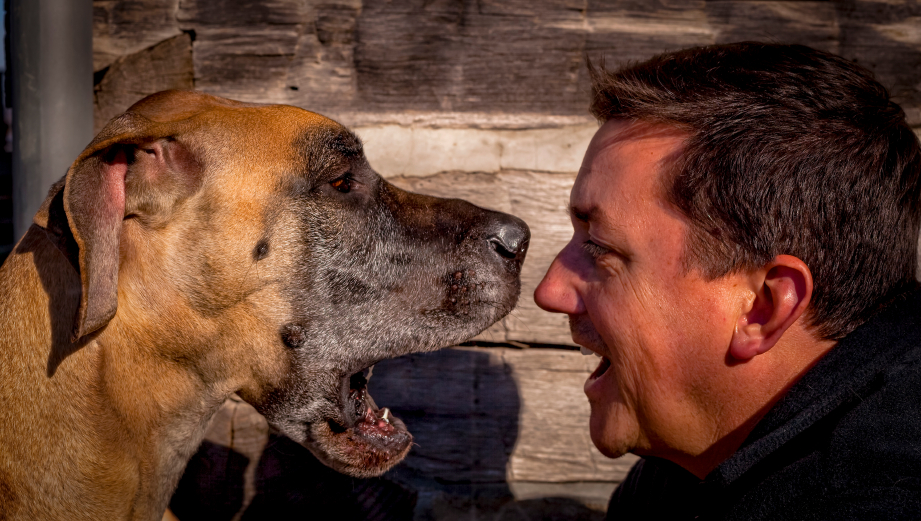Actions speak Louder than Words
Have you ever had your dog just look at you when you asked him to do something and even after repeating what you wanted a number of times, he still didn’t comply?
It’s likely he didn’t understand what you wanted. Even if it was a command he’s done many times before, when asked to do so in a different location or in different circumstances, he didn’t make the connection between the words and what it was you wanted him to do.
Unlike us, dogs communicate mainly with body language and this can include eye contact, the way in which they move and carry themselves and specific gestures. Most of these are either misinterpreted by us or not noticed as a means of communication.
O.K, so we might never fully understand another species means of communication but we can make ourselves easier to understand by our dogs. And we can do that by using some body language. People who do agility with their dogs learn quickly that body language is the main way of directing your dog through the course. And this can be applied to everyday life with your best friend.
Some simple body language to use in everyday dealings with your dogs:
* When you call your dog to you, turn your body and move a few steps in the direction you want him to come, rather than standing stationary, facing your dog and just using the word command. You can also use your arm to indicate the direction you want him to come.
* When you approach a new dog, try doing it the way another dog would. Arc around and come alongside the dog. Walking straight up to a dog face to face can be seen as threatening, as can learning over the dog to give him a pat.
* When you’re training your dog with the basics – sit, stay, come, down etc., use a hand signal with each word. Your dog will follow these more easily than the word command on its own.
* Turning and walking away if a dog jumps up at you or demands your attention will give him the message that his actions are unacceptable, much more than telling him off verbally ever will. To a dog, a telling off is still attention, so he got what he wanted, whereas being actively ignored when he jumped up at you didn’t get him any attention.
* Have you noticed your dog watching your face when you are speaking to him? So use facial expressions as well when you’re communicating with him. A smile and soft eyes when you’re praising or giving affection, laughing with a happy face when you’re playing together.
* Sitting down with a loud sigh and yawn lets your dogs know it’s time to relax.
There is plenty of other body language we can use and most of us do things that we don’t even realise when interacting with our dogs.
Leave me a comment below if you’ve got some good ways of talking to your dog that you’d like to share.
 Posted by adminlog
Posted by adminlog- Posted in Behavior, Training
 Jan, 01, 2014
Jan, 01, 2014 No Comments.
No Comments.
Upcoming Classes
Puppy School : The date for the next class at SRVS Bulls is to be advised.
Phone Karen on 027 5253891 for more details and to make a booking.
Canine Life Skills Class: The next class date will be advised shortly.
Online Course: Good Dog Level 1 – NOW AVAILABLE. Click here for more details
https://schoolfordogs.teachable.com/p/communicanine-level-1
Member of


 06 3288799
027 5253891
info@communicanine.co.nz
06 3288799
027 5253891
info@communicanine.co.nz


